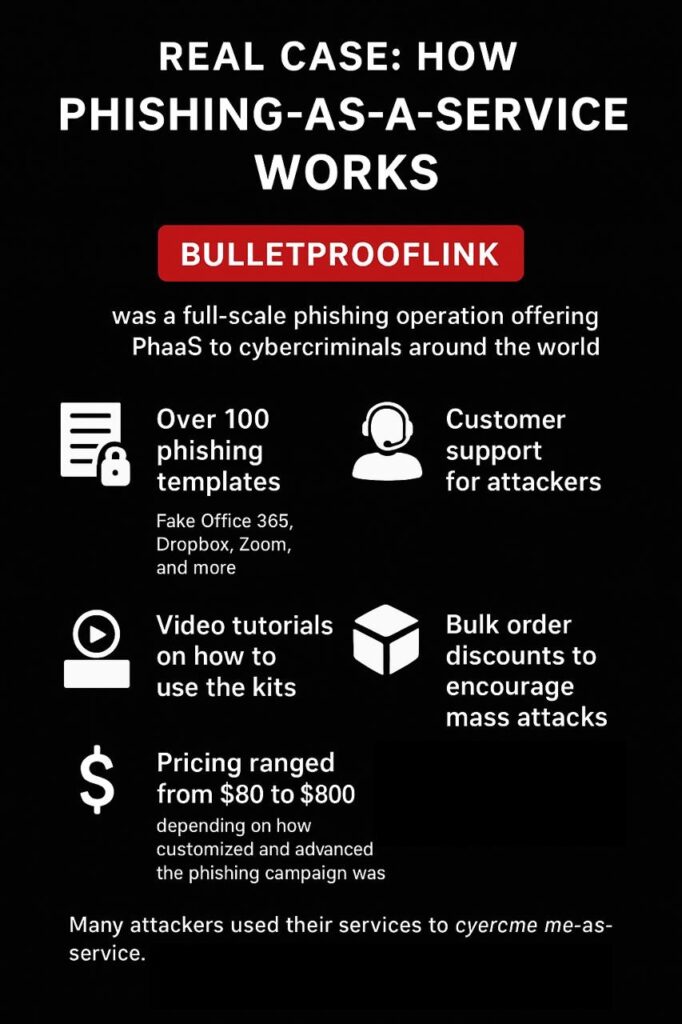Phishing is no longer just a lone hacker tricking people with poorly written emails.
Today, cybercrime has become professionalized and even sold as a service — much like Netflix or Spotify, but for criminals. One of the most shocking examples of this is BulletProofLink, a massive Phishing-as-a-Service (PhaaS) operation uncovered by Microsoft.

What Was BulletProofLink?
BulletProofLink wasn’t just another hacker group. It was a full-fledged cybercrime business that sold phishing tools, services, and support to attackers around the world.
Here’s what they offered:
🧪 100+ ready-made phishing templates Fake Office 365 login pages, Dropbox, Zoom, and many more.
💼 Customer support Just like any legit SaaS company, they provided assistance to ensure criminals could run their phishing campaigns smoothly.
🎓 Video tutorials Step-by-step guides teaching even beginners how to launch attacks.
📦 Bulk order discounts Encouraging attackers to buy in large quantities and run phishing at scale.
💰 Flexible pricing Services ranged from $80 to $800 depending on the level of customization and sophistication.
How Attackers Used It
Cybercriminals who signed up for BulletProofLink weren’t just experimenting. They were running serious operations. The phishing kits were used to:
Steal corporate login credentials Launch ransomware attacks Drain financial accounts Compromise organizations worldwide
Why This Matters
This case is an eye-opener because it shows how easy it has become to launch phishing attacks without technical skills.
With services like BulletProofLink, anyone with money can buy professional phishing tools and start attacking targets immediately.
Even though Microsoft shut them down, many similar services continue to operate in the dark corners of the internet.
Key Takeaway
Phishing has gone pro. It’s no longer just individuals sending out scam emails — it’s an organized business model with templates, pricing plans, and customer support.
👉 The best defense is awareness. Stay cautious of suspicious links, emails, and login requests. Always verify before you click.
📺 Watch the full video breakdown here: